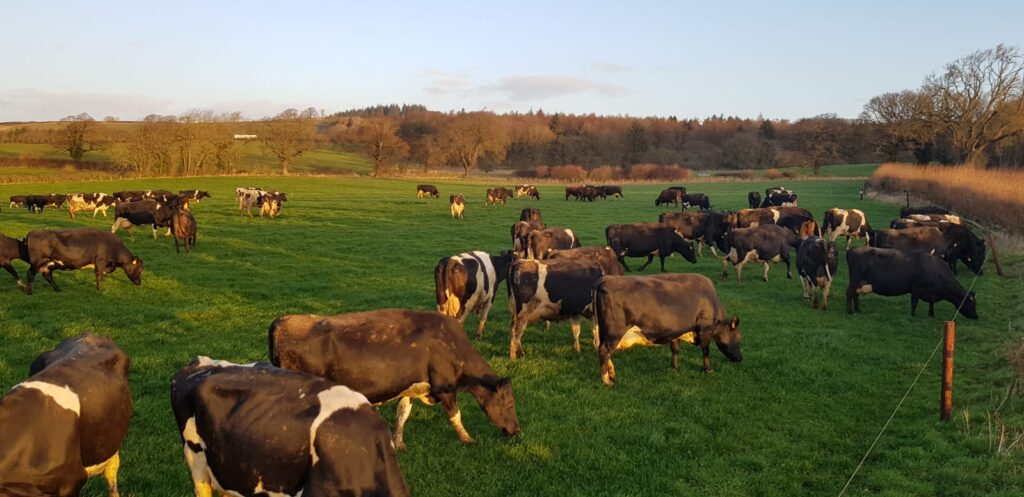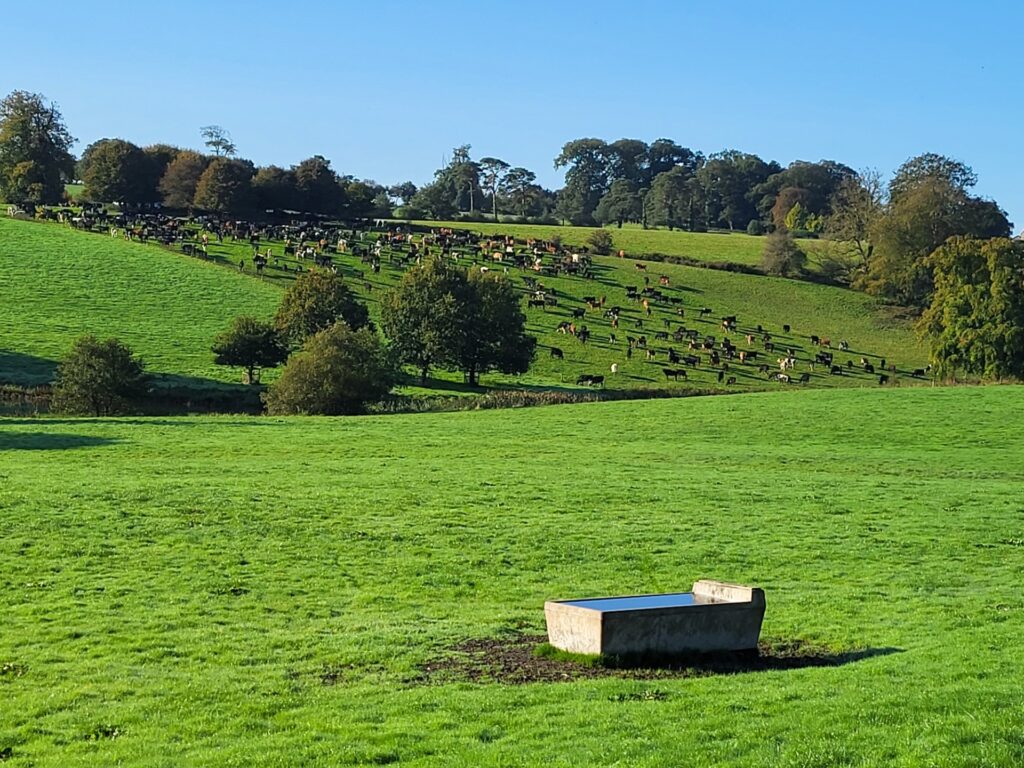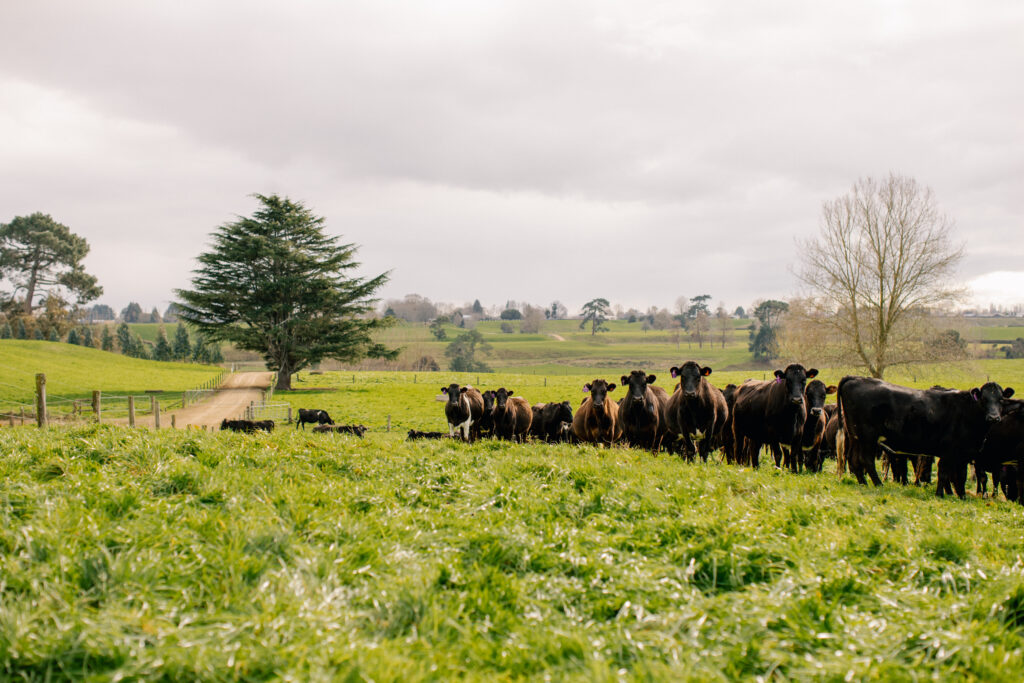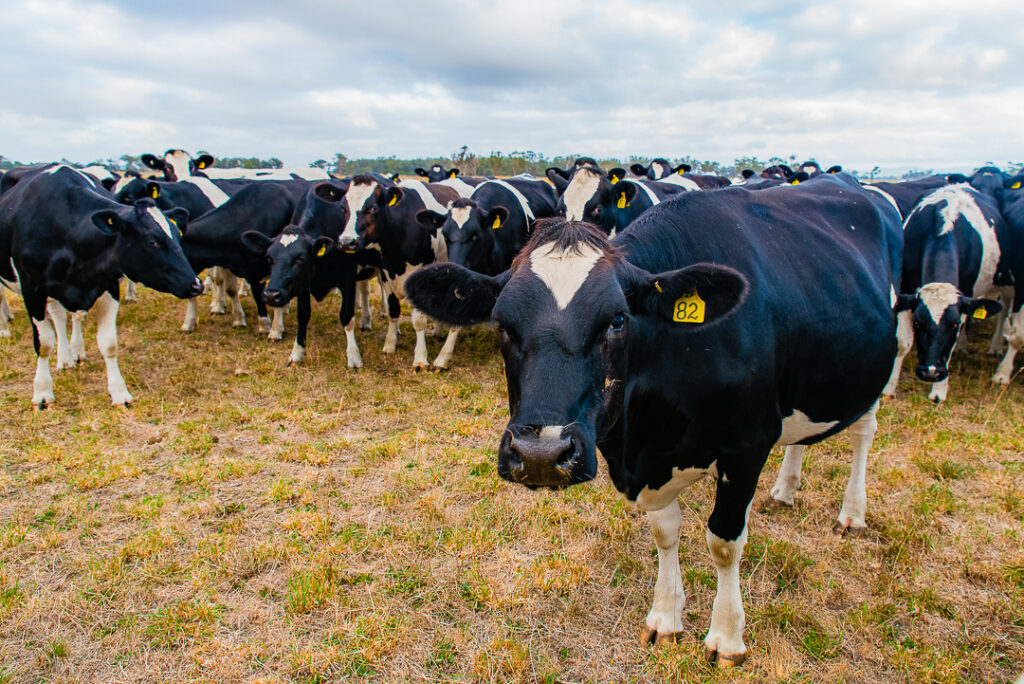Current situation
Grass dry matter percentages are high, creating excellent grazing conditions across many farms. As a result, there is often more available grass than the platemeter readings suggest. Some farms have already moved into their second grazing rotation, although higher average farm covers (AFCs) than ideal are being reported in some cases.
Dry and cool weather has slowed grass growth slightly in some areas. However, spring-calving cows are showing strong body condition scores (BCS) as they head into mating, and earlier turnout of young stock has been possible thanks to the favourable conditions.
Priorities for the coming month
Grass growth is now kicking into gear, reaching 40–50 kgDM/day. When the rain returns, be ready to make the most of it!

Here are the key management actions to focus on:
- Adjust concentrate feeding: As you pass ‘magic day’ (the point where grass growth meets animal demand), adjust concentrate levels to hit pre-mating targets or challenge autumn-calving cows on grass.
- Manage nitrogen applications carefully: With limited rainfall, residual nitrogen is likely to remain in the soil from spring applications. Consider this when planning any further fertiliser use.
- Grass testing: Complete a herbage analysis before the first silage cut to check ammonia nitrogen levels, as residual soil nitrogen could impact silage quality.
- Spring calvers: Start pre-mating heat checks now to identify non-cyclers before the official start of mating.
- Disease vigilance: Talk to your vet about the current risk level of bluetongue virus and vaccination timing. For more information, check updates via the AHDB webinar or NADIS.
- Autumn-calving heifers: Monitor the BCS of in-calf heifers carefully. With good grazing conditions and high-quality grass, ensure they don’t become over-conditioned ahead of calving.
For tailored advice specific to your farm, contact your Pasture to Profit consultant today.



